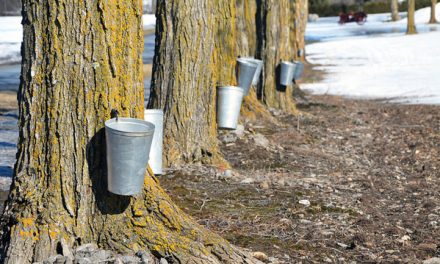By Terry Tinkess
AgriNews Staff Writer
According to a mid-year review prepared by Farm Credit Canada (FCC), average farmland value continues to increase despite higher interest rates.
“Strong farm cash receipts, buoyed by robust commodity prices, have managed to quell some of the profitability challenges from higher interest rates and farm input costs,” said J.P. Gervais, FCC vice-president and chief economist.
“Producers are still making strategic investments in their operations and buying farmland, which is in short supply and high demand. This healthy farmland market is a good indication there is confidence and optimism in the future of the industry among producers.”
Ontario reported the highest average farmland value increase with( 22.2 per cent), while Prince Edward Island (15.2 per cent) and Quebec (10 per cent) were second and third respectively.
The report was based on information gathered in 2021.
The last time Ontario saw such a large increase was 2012 when the percent change was 30.1 per cent. Every year since 2015, the increase has only been single digit, so the increase of 22.2 per cent in 2021 is exceptional.
In Eastern Ontario, the increase was 12 per cent with a value per acre of $9,700 (FCC reference value per acre) and a range of $4,000 and $17,100. (**The value range represents 90% of the sales in each area and excludes the top and bottom 5%).
While not as large as the Ontario increase, Quebec’s increase was still quite healthy. Quebec historically achieved double digit increases in 2012-2014, each of which exceed the 2021 increase of 10 per cent.
In Western Quebec (the Outaouais) there was a per cent change of 14.3 per cent, an average value per acre of $3,900 (FCC reference value per acre) and a range of $1,600-$6,600 (Again, the value range represents 90% of the sales in each area and excludes the top and bottom 5%).
While most land transactions were agreed to prior to the most significant interest rate increases, Gervais believes the more recent increases will not completely deter some producers from making land purchases that make sense for their operations.
“There’s little doubt that higher borrowing costs will slow the demand for farmland,” he said. “But the fact that the supply of farmland available is limited and farm incomes are trending in the right direction, this could offset the impact of interest rate increases.”
Gervais recommends operators maintain a risk management plan to protect their businesses against unforeseen circumstances, such as increases in borrowing costs and unfavourable movements in commodity prices.
FCC created and utilized a system based on benchmark farm properties to monitor variations in cultivated land values across Canada. These parcels are representative of each area of the country. FCC appraisers estimate market value using recent comparable land sales. All sales must be arm’s length transactions. Once sales are selected, they are reviewed, analyzed, and adjusted to the benchmark farm properties.
FCC continuously reviews benchmark properties to ensure they are representative of the general region. The report includes only cultivated and irrigated land.
You can review the full report online at https://www.fcc-fac.ca/fcc/resources/2021-farmland-values-report-e.pdf.













